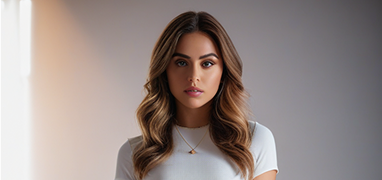
They say a picture is worth a thousand words — but what if it could also be worth a thousand stories?
In today’s digital age, writers are finding new and exciting ways to spark creativity, and one of the most powerful tools at their disposal is using images as a foundation for storytelling. Whether you’re a seasoned novelist or just starting out, turning an image into a writing prompt can lead you down surprising, inspiring creative paths.
In this guide, we’ll show you exactly how to transform any image into a dynamic writing prompt, with both manual methods and the help of AI image-to-text generators.
Why Images Are a Goldmine for Storytelling
Images trigger emotional responses, memories, curiosity, and questions — all the essential elements for powerful storytelling.
Key benefits of using images:
- Instant atmosphere: A single photo can immediately suggest mood and setting.
- Character suggestions: Observing figures in photos can lead to rich character creation.
- Built-in conflict: A mysterious or emotionally charged image hints at untold drama or tension.
- Sensory richness: Images help writers visualize details that bring scenes vividly to life.
Step-by-Step Guide: How to Turn an Image Into a Writing Prompt
Here’s a practical, repeatable method to transform any picture into a story idea.
1. Observe Carefully
Spend 1–2 minutes studying the image. Ask yourself:
- What is happening here?
- Who are the people (if any) in the image?
- What emotions does the scene evoke?
- What might have happened just before or after this moment?
Tip: Zoom in on the tiny details. A forgotten scarf, a half-eaten apple, a cracked window — small elements can fuel big ideas.
2. Ask the “5 Ws + H”
Use classic journalist questions:
- Who is in the image?
- What are they doing?
- When is this happening (time of day, season, historical period)?
- Where is this?
- Why is this happening?
- How did the situation come to be?
Example:
Photo of an abandoned carnival.
- Who: A lone boy standing by a broken carousel.
- What: He seems to be waiting.
- When: Late afternoon, winter.
- Where: Forgotten small-town fairgrounds.
- Why: Searching for a missing brother? Escaping reality?
- How: He heard a rumor about the carousel granting wishes.
Now you have the skeleton of a powerful short story!
3. Write Three Quick Story Possibilities
Force yourself to generate three different story scenarios based on the same image.
This prevents the first idea from limiting your imagination.
Example for the carnival photo:
- The boy is meeting a ghost.
- The boy must fix the carousel to escape a time loop.
- The abandoned fairground hides an underground society.
Choosing between them — or combining elements — creates layered, original storytelling.
4. Use AI Image-to-Text Prompt Generators
If you want to fast-track the brainstorming, an AI image prompt generator can do the heavy lifting.
How it works:
- Upload your photo.
- Let the AI scan for themes, emotions, objects, and settings.
- The AI will generate 3–10 textual prompts that you can expand into full stories.
Advantages of using AI tools:
- Discover angles you hadn’t noticed.
- Save time during brainstorming.
- Get inspired by creative, unexpected prompts.
→ Try our AI image prompt generator to spark your next great story idea!
5. Expand with “What If” Questions
Take your generated prompt and push it further with “What if…?” questions.
Example:
Prompt: “A city where time has stopped.”
“What if the clocks stopped to prevent a disaster?”
“What if only children could move through frozen time?”
“What if the city isn’t really frozen, but controlled by unseen beings?”
Every new question leads to richer plots, deeper characters, and unexpected twists.
Practical Exercises for Writers
Want to make this process second nature? Try these writing exercises:
– The 5-Minute Flash Fiction
Pick a random image, set a timer for 5 minutes, and write a micro-story.
– Image Swap Challenge
Partner with a fellow writer. Exchange strange images and write based on each other’s selection.
– Visual Journaling
Keep a “visual journal” where you save interesting photos and generate a daily story prompt from one.
Best Image Sources for Writing Inspiration
- Unsplash: Free high-quality photos of landscapes, cities, people.
- Pexels: Diverse collection perfect for varied genres.
- Pinterest: Curated boards on fantasy, cyberpunk, romance themes.
- Google Images: Search niche topics (e.g., “forgotten castles,” “abandoned cars”).
Or better yet, upload your own photos to create truly personal prompts!
Real-World Examples: Writers Who Use Image Prompts
- Erin Morgenstern, author of The Night Circus, often visualizes scenes based on dreamy, surreal imagery.
- Neil Gaiman encourages writers to “look sideways” at everyday objects and images for hidden storylines.
- Many screenwriters storyboard key scenes based purely on photographic inspirations before even writing dialogue.
You’re in good company when using visuals for literary creativity!
Conclusion
Inspiration can come from anywhere, but few sources are as immediate, evocative, and endlessly variable as images. By learning to turn pictures into writing prompts, and combining observational skills with the power of AI, you’ll never have to fear the blank page again.
Your next story could be hidden in a single photograph. Are you ready to find it?
📸 ✍️ Use our AI Image-to-Text Generator and unlock your next masterpiece today!